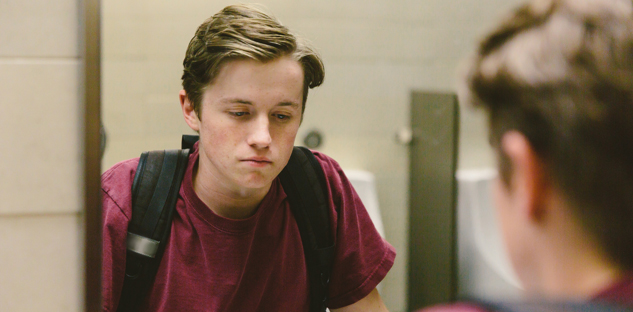
Understanding Boys and Body Image
By Jenna Hepp | May 2023

Statistic on Males and Body Image:
According to Skemp et al. (2019), the motivation for most teenage girls is most generally to become “thin,” and boys generally show that same motivation to be muscular. Muscle dysmorphia (MD) is a form of Body Dysmorphic Disorder, defined as an “intense and excessive preoccupation or dissatisfaction with body size and muscularity” (p. 62). Teens that fit the description of MD often show symptoms of body image disturbances, excessive weight lifting, specific diets, substance/steroid use, persistence in looking in the mirror and/or checking weight and avoidance of situations in which their body would be revealed.
Long-term consequences of these types of behaviors could be severely dangerous to both the teen’s physical and mental health and even result in death. If you have concerns about a student who may be struggling with MD, please reach out to them.
Some Causes of Male Body Image Issues
Social Media
With what we know about males and mental health stigma, male students are less likely to seek professional help. This is especially true when they are struggling with body image, an issue that is often assumed to only apply to females. Here is a list of ways to help male students who are struggling with body image and/or muscle dysmorphia:
- 75 percent of adolescent boys are dissatisfied with their bodies (Nagata et al., 2019)
- 50 percent of boys report use of protein powder, 8.4 percent used creatine, and 4.2 percent used anabolic steroids (Yager & McLean, 2020)
- One fourth to one third of those with eating disorders are male (Gorrell & Murray, 2019)
- Gay and bisexual males report more body image concerns than heterosexual males (Frederick et al., 2022)
According to Skemp et al. (2019), the motivation for most teenage girls is most generally to become “thin,” and boys generally show that same motivation to be muscular. Muscle dysmorphia (MD) is a form of Body Dysmorphic Disorder, defined as an “intense and excessive preoccupation or dissatisfaction with body size and muscularity” (p. 62). Teens that fit the description of MD often show symptoms of body image disturbances, excessive weight lifting, specific diets, substance/steroid use, persistence in looking in the mirror and/or checking weight and avoidance of situations in which their body would be revealed.
Long-term consequences of these types of behaviors could be severely dangerous to both the teen’s physical and mental health and even result in death. If you have concerns about a student who may be struggling with MD, please reach out to them.
Some Causes of Male Body Image Issues
Social Media
- More time spent on social media is often correlated with poor body image
- Muscle dysmorphia is also increased with the increase of screen time
- Bullying for their appearance or teased about weight
- How others talk about their body
- The male “toughness” mentality that you must be muscular and strong to accurately represent what being a male is
- The male body types of iconic roles in movies, television, etc.
With what we know about males and mental health stigma, male students are less likely to seek professional help. This is especially true when they are struggling with body image, an issue that is often assumed to only apply to females. Here is a list of ways to help male students who are struggling with body image and/or muscle dysmorphia:
- Help end the stigma. Raise awareness of body image struggles in males within your schools, to teachers, parents and administrators.
- Address social media. Help students identify and unfollow pages/people/posts that make them feel negatively towards themselves. Educate students on the processing of media and edited photos for marketing, and to the unhealthy behaviors of specific diets and exercises that many celebrities use to fulfill roles.
- Increase self-esteem. Self-esteem is highly correlated to body image and appearance. Often, body image issues stem from insecurities or self-loathing. Journaling, gratitude practice and education on healthy body image could be helpful to increase self-esteem.